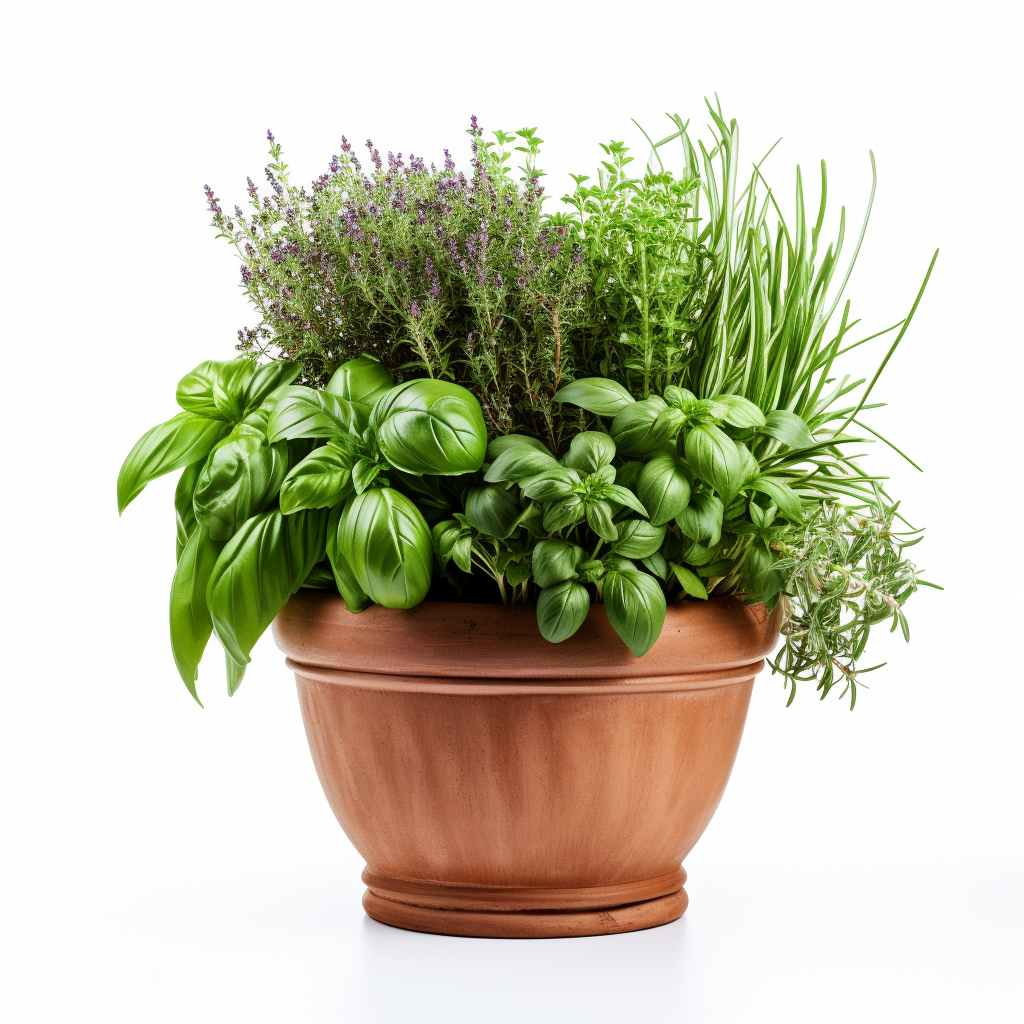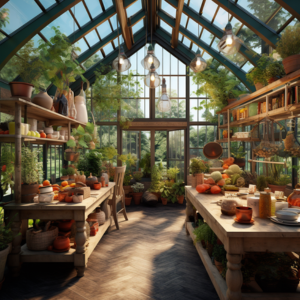It’s a snowy winter day, and you’re savoring a crisp, homegrown salad for lunch. No, you haven’t stepped into some garden oasis; you’re reaping the rewards of your very own indoor vegetable garden. In this article, we’ll explore the captivating world of indoor vegetable gardening, where the joy of cultivating fresh greens knows no season.
Choosing the Right Vegetables for Indoor Gardening
Indoor vegetable gardening is all about making the most of your space. Start by choosing the right vegetables. Opt for compact varieties and those that are particularly well-suited for indoor growth. Think herbs, leafy greens like spinach and lettuce, and even compact fruiting plants like cherry tomatoes or dwarf peppers.
Herbs
Basil: Basil is a fragrant herb that grows exceptionally well indoors. It’s perfect for adding fresh flavor to a variety of dishes.
Parsley: Both curly and Italian flat-leaf parsley varieties grow well indoors. They are versatile herbs that can be used in cooking and as garnishes.
Chives: Chives are easy to grow in containers and add a mild onion-like flavor to your dishes.
Mint: Mint is a vigorous herb that can be grown indoors in a pot to prevent it from spreading too aggressively. It’s excellent for making tea and cocktails.
Cilantro (Coriander): Cilantro is a versatile herb used in many international cuisines. It can be grown indoors for a continuous supply of fresh leaves.
Vegetables
Lettuce: Lettuce varieties like loose-leaf and romaine are well-suited for indoor growing. They have shallow roots and can be harvested as cut-and-come-again crops.
Spinach: Spinach is a nutritious leafy green that grows well indoors. It prefers cooler temperatures, making it a great option for indoor cultivation.
Microgreens: Microgreens are young, tender plants harvested at an early stage. You can grow various types, including arugula, radish, and mustard, in small containers on windowsills or under grow lights.
Spring/Green Onions (Scallions): Spring/Green onions are low-maintenance and can regrow from the white root ends after being used in cooking.
Cherry Tomatoes: Compact cherry tomato varieties, like “Tiny Tim,” can be grown indoors in larger containers or hanging baskets. They require ample light for fruit production.

Remember that successful indoor gardening often involves some experimentation to find the best conditions for your specific location and plants. Start with these ten options, and you’ll be on your way to enjoying fresh herbs and vegetables right from your own indoor garden.
Plant Type: Different vegetables have varying water requirements. Some, like lettuce and spinach, prefer consistently moist soil, while others, like succulents or herbs, like to dry out a bit between waterings. Research the specific needs of the plants you’re growing to get a better idea of their water requirements.
Container Type: The material and size of your containers influence how quickly the soil dries out. Smaller pots and those made of porous materials like terracotta tend to dry out more rapidly. Larger containers and plastic pots usually retain moisture better.
Growing Medium: The type of potting mix you use can impact water retention. A well-draining potting mix with materials like perlite or vermiculite will help prevent overwatering.
Environmental Conditions: Indoor environments can vary in terms of humidity, temperature, and light. Dry, warm conditions will require more frequent watering, while cool, humid conditions may necessitate less.
Plant Stage: Young seedlings and transplants often require more frequent watering than mature plants with well-established root systems.
Selecting the Perfect Containers
The first step in your indoor gardening adventure is selecting the right container. Containers not only hold the soil but also play a significant role in plant health. Consider the size, drainage, and material. Whether it’s classic clay pots, modern grow bags, or a hydroponic system, choose what suits your space and style.
Traditional Pots: Standard plastic or terracotta pots are versatile and readily available. Ensure they have drainage holes at the bottom to prevent waterlogged soil.
Grow Bags: Fabric grow bags are lightweight, breathable, and promote excellent root aeration. They are particularly well-suited for root vegetables like carrots and radishes.
Window Boxes: These long, narrow containers are designed to sit on windowsills, making them great for growing compact vegetables like lettuce and herbs.
Hanging Baskets: Ideal for trailing or vining plants like cherry tomatoes or strawberries, hanging baskets save floor space and add visual interest.
Self-Watering Planters: These containers have a reservoir at the base, making them perfect for busy individuals. They provide a consistent water supply to your plants.
Hydroponic Systems: If you’re interested in soilless growing, consider hydroponic systems designed for indoor use. They come in various sizes and configurations.
Tower Gardens: Vertical gardening systems like tower gardens allow you to grow multiple vegetables in a compact space. They are great for small apartments.
Recycled Containers: Get creative and upcycle old containers like buckets, crates, or wooden boxes to give your indoor garden a unique, eco-friendly touch.
Garden Troughs: Trough-style containers are wide and deep, making them suitable for growing larger vegetables like peppers or eggplants.
Herb Planters: Some containers are specifically designed for herbs and have multiple compartments, making them perfect for a small herb garden on your kitchen counter.
Terrariums: Small, glass terrariums are perfect for growing microgreens and tiny herbs. They add a decorative touch to your indoor space.
Window Sill Planters: These shallow, elongated containers are made to fit on window sills and are ideal for small herbs or compact greens.
Mason Jars: Mason jars make charming containers for growing herbs or small vegetables. You can hang them or place them on a sunny windowsill.
When choosing a container, consider the size, drainage, and material. Make sure it’s appropriately sized for the plant’s root system and that it allows excess water to escape. Also, consider aesthetics and how the container fits into your indoor decor. Ultimately, the best container for your indoor vegetable garden is one that suits your space, style, and the specific vegetables you plan to grow.

Adequate Lighting
When you’re indoors, you need to mimic the sun’s life-giving rays. Lighting is critical. You can choose between natural and artificial lighting, with the latter being particularly useful in spaces with limited sunlight. Invest in quality grow lights, position them right, and monitor light exposure to ensure your plants thrive.
Light Types: There are different types of artificial lighting to choose from, including fluorescent, LED, and high-intensity discharge (HID) lights. LED grow lights have become increasingly popular for indoor gardening due to their energy efficiency and spectrum adjustability.
Light Spectrum: Plants require specific light wavelengths for photosynthesis. Blue light (400-500 nm) is essential for vegetative growth, while red light (600-700 nm) is crucial for flowering and fruiting. Some LED grow lights allow you to adjust the light spectrum to cater to different growth stages.
Light Intensity: Light intensity, often measured in lumens or PAR (Photosynthetically Active Radiation), is critical. Different plants have varying light requirements, so it’s important to match the light intensity with the plants you’re growing. Leafy greens like lettuce may require less light than fruiting plants like tomatoes.
Light Duration: Most indoor vegetables require 12-16 hours of light per day to mimic the longer daylight periods of outdoor growing. A timer can help you maintain a consistent light schedule.
Light Placement: Ensure the artificial light source is positioned at the correct distance from the plants. Too close can cause light burn, while too far away may result in leggy growth.
Light Heat: Some light sources, like HID lights, can generate significant heat. Make sure your plants are not too close to hot lights, as this can cause stress or damage.
Light Uniformity: Aim for even light distribution across all your plants. You may need to adjust the light’s position and use reflective materials to ensure uniform coverage.
Cost and Efficiency: Consider the cost of the light source and its energy efficiency. LED grow lights are typically energy-efficient and have a longer lifespan, making them a cost-effective choice in the long run.
Lighting for Seed Starting: If you’re starting seeds indoors, consider using grow lights to provide the necessary light for germination and early growth.
If you’re concerned about natural light availability or want to grow vegetables year-round, investing in a quality artificial lighting setup can be a wise choice. Be prepared to adjust the light intensity and duration based on the needs of your specific plants and the environmental conditions in your indoor garden.

Soil and Potting Mixes
Choosing the right soil or potting mix is crucial. Ensure it’s well-draining and nutrient-rich, which is essential for your plants to flourish. Many indoor gardeners swear by organic or custom blends for the best results.
Peat Moss or Coconut Coir: These organic materials retain moisture, ensuring a steady water supply to your plants. They also help with aeration and maintain the soil structure.
Perlite or Vermiculite: These additives improve drainage and aeration in the potting mix. They prevent the soil from becoming too compacted, promoting healthy root development.
Compost: Compost provides essential nutrients and contributes to the overall fertility of the potting mix. It’s a natural source of organic matter and beneficial microorganisms.
Garden Soil (Optional): Some potting mixes incorporate a small amount of garden soil for added nutrients and microbial diversity. However, garden soil should only be a minor component and should be sterilized to avoid introducing pests and diseases.
Well-Balanced Nutrients: A good potting mix should contain a balanced blend of essential nutrients, including nitrogen (N), phosphorus (P), and potassium (K), often expressed as N-P-K ratios. Look for a potting mix with a slow-release fertilizer component to support your plants’ nutritional needs.
pH-Adjusted: The potting mix should have a slightly acidic to neutral pH (around 6.0 to 7.0) to ensure optimal nutrient availability to the plants. Many commercial potting mixes are pH-adjusted.
Trace Minerals: In addition to the primary N-P-K nutrients, the mix should contain essential trace minerals like calcium, magnesium, and iron.
Disease Resistance: Look for potting mixes labeled as “disease-resistant” or “sterile” to reduce the risk of introducing soil-borne pathogens into your indoor garden.
Hydration Crystals (Optional): Some potting mixes include water-absorbing crystals to help maintain consistent moisture levels, especially in larger containers or if you tend to forget to water your plants regularly.
Organic Materials: A potting mix with organic components such as kelp meal, bone meal, or worm castings can provide a natural source of nutrients.
When purchasing a commercial potting mix, be sure to check the packaging for information about the specific mix’s composition and any recommended uses. Different vegetable varieties may have slightly different preferences for soil conditions, so keep that in mind when choosing your potting mix.
Remember that you can also create your own custom potting mix by blending the above components in appropriate ratios. By using a well-balanced potting mix, you can ensure that your indoor vegetables have the right environment to grow healthy and productive.
Click here to continue to Part 2
